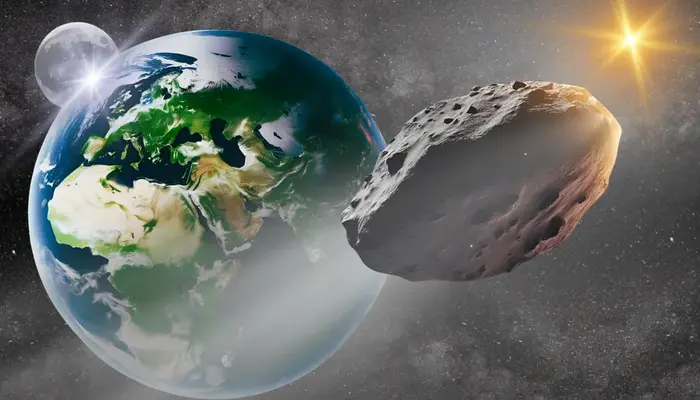Asteroid 2024 YR4 No Longer a Threat to Earth

The “city-killer” asteroid 2024 YR4 no longer poses a danger to Earth. New observations have completely ruled out the possibility of impact. Initially, NASA’s risk assessment placed this asteroid at a 1-in-32 chance of colliding with our planet. However, fresh tracking data has reduced this probability to effectively zero.
From High Alert to No Hazard
Discovered in December 2024, asteroid 2024 YR4 quickly climbed to Level 3 on the Torino Scale, a system that categorizes asteroid impact risks. This level signified a 1% or greater chance of impact, warranting close monitoring. However, as astronomers collected more data, the risk steadily declined.
On February 23, 2025, NASA’s Jet Propulsion Laboratory (JPL) revised its calculations, confirming an impact probability of 1 in 20,000 for 2032. With this update, 2024 YR4 was downgraded to Level 0, meaning it poses no threat to Earth.
Why Impact Predictions Change
Asteroid tracking involves significant uncertainties, especially right after discovery. As more observations refine an asteroid’s orbit, impact probabilities often shift dramatically. Astronomer David Rankin explained this using an analogy:
“Imagine holding a long stick. Moving one end just slightly creates a huge shift at the other end. Similarly, small errors in an asteroid’s position can initially make its future path appear uncertain.”
This explains why early estimates suggested a possible impact before the risk was eliminated with better data.
Read: China’s Xuntian Telescope to Rival JWST with Repairable Design
Close Flybys in 2028 and 2032
While 2024 YR4 won’t hit Earth, it will make two close approaches in the coming years:
- December 17, 2028 – The asteroid will pass within 5 million miles of Earth.
- December 22, 2032 – It will come even closer, at 167,000 miles—closer than the Moon, which orbits at 238,855 miles away.
These flybys will provide a valuable opportunity for scientists to study the asteroid’s composition and behavior.
Growing Detection Capabilities
The 2024 YR4 case highlights how asteroid detection and tracking have improved. According to MIT planetary scientist Richard Binzel, Earth regularly encounters objects of this size, but better technology now allows astronomers to detect them in advance.
“As astronomers continue improving their tracking methods, we will be able to predict these events earlier and with greater accuracy,” Binzel said. “Rather than being anxious, we should see these discoveries as progress in planetary defense.”
The Future of Asteroid Tracking
Asteroids like 2024 YR4 are becoming easier to detect. Although initial predictions may suggest a potential threat, further observations typically clarify the situation. This means low-risk asteroids will be a common occurrence, interesting for scientists but not cause for public alarm.
With continued advancements in telescopes and tracking systems, Earth is becoming better prepared for any potential asteroid threats. For now, 2024 YR4 is off the danger list, allowing scientists to focus on learning more about the space rocks that pass through our cosmic neighborhood.
Follow us on Google News, Instagram, YouTube, Facebook,Whats App, and TikTok for latest updates












